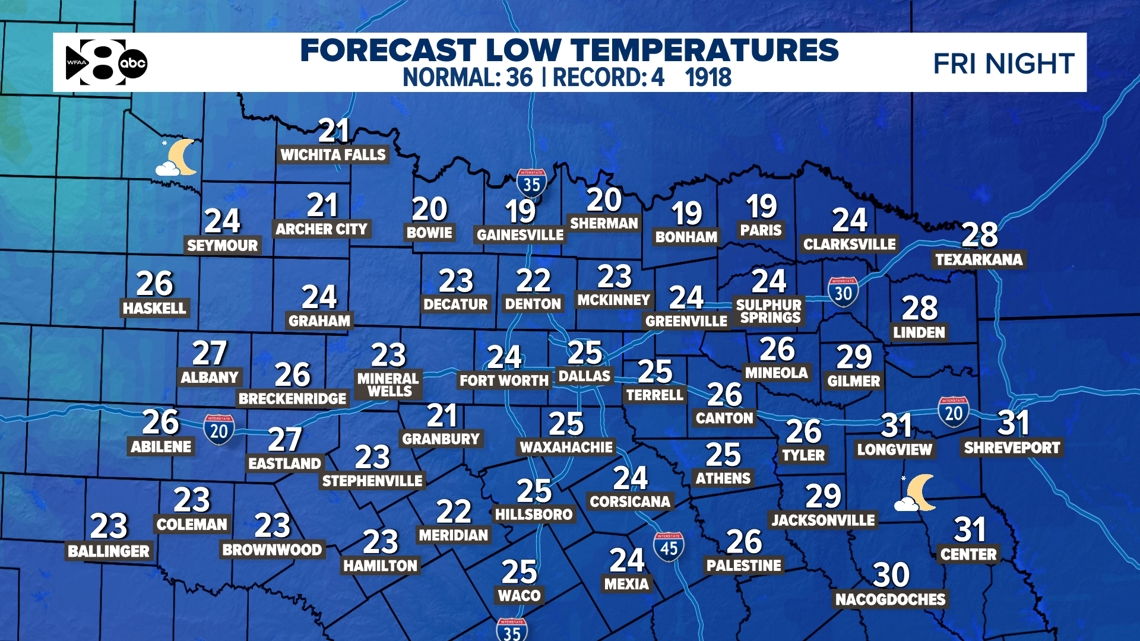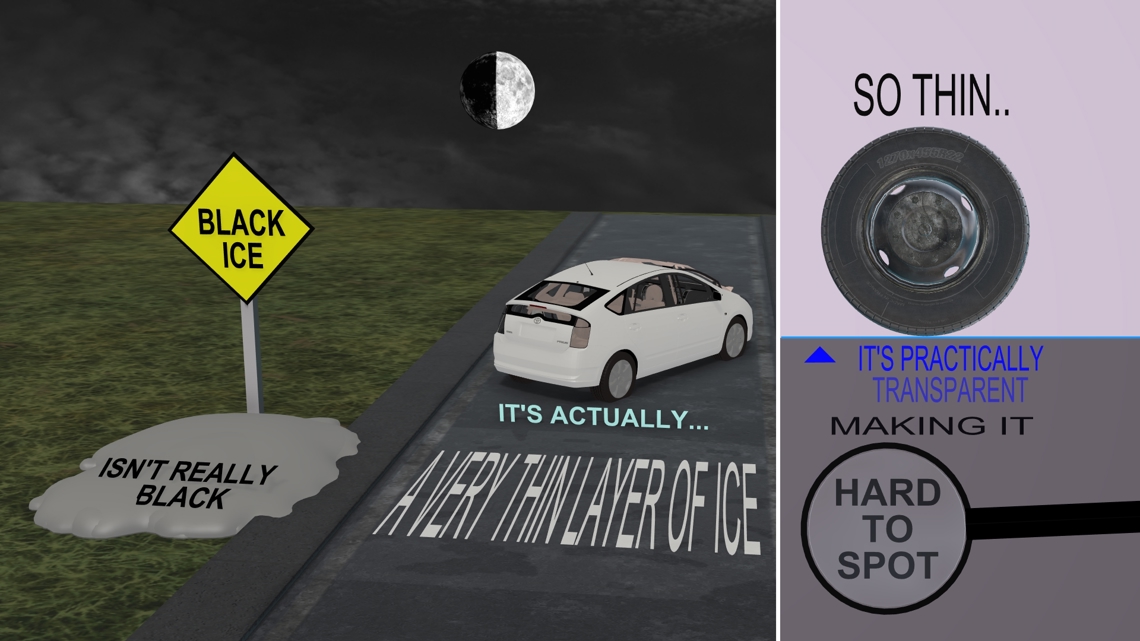After some melting this weekend, a refreeze is possible overnight Friday and Saturday.
DALLAS — With all of the wintry weather North Texas picked up Thursday, black ice is a concern this weekend. The weekend forecast calls for temps above freezing (low to mid-40s) and Friday’s high in the mid to upper 30s. This will create snowmelt and water on the roads. Then, temperatures on Saturday and Sunday morning will drop to or below freezing. This will create refreezing across area roads, especially bridges and overpasses. Be extra cautious both Saturday and Sunday morning.


Black ice is a thin, transparent layer of ice that forms on roads and surfaces. The term “black” refers to the appearance of the ice when it forms on asphalt. The ice itself is clear, allowing the dark surface beneath to show through, making it nearly invisible, hence the term “black ice.”
Because of its transparency, black ice is often hard to spot, making it especially treacherous. It can occur on any outdoor surface — roads, sidewalks, driveways, bridges or parking lots — leading to unexpected and potentially dangerous situations.
How does black ice form?
Black ice forms when moisture on the ground freezes into a thin layer of ice, often under specific weather conditions. Several factors contribute to the creation of black ice, and understanding these can help you predict and avoid this dangerous phenomenon.
-
Freezing temperatures: Black ice typically forms when temperatures drop below freezing (32°F or 0°C). If there’s any moisture in the air or on the surface, such as rain, snowmelt or dew, it can freeze rapidly, creating a slick, clear layer of ice. This can happen even when it’s not snowing or raining, so drivers should remain cautious during cold, clear days.
-
Late-night or early morning: Black ice is most common in the early morning or late evening when the temperature is typically at its coldest. During these hours, the sun has set, and the ground is exposed to the frigid air, allowing moisture to freeze quickly. In the morning, the sunlight can warm the surface enough to melt some of the ice, but shaded areas and roads may remain icy for hours.
-
Bridges and overpasses: Bridges and overpasses are more susceptible to black ice formation due to their exposure on both sides to the colder air. Unlike regular roads insulated by the ground, bridges can freeze from above and below, making them especially slippery. Black ice on these surfaces can form faster and more unexpectedly.
-
Melting snow: What to expect this weekend: Snow that melts during the day and creates pools of water on roads and sidewalks. When temperatures drop overnight, these puddles of water freeze into black ice. This scenario is especially common after snowstorms where the sun partially melts snow during the day, but the temperature drops again at night.


Dangers of black ice
Black ice is notoriously dangerous because of its subtle appearance. Unlike white ice, which may appear snowy or slushy and is more easily recognized, black ice is often undetectable until it’s too late. This makes it particularly hazardous for drivers, cyclists, and pedestrians.
For drivers, black ice is one of the most challenging conditions to navigate. If a vehicle hits black ice, it can lose traction, leading to skidding, sliding or even rolling over. High-speed driving or sudden braking only increases the risk of losing control. Pedestrians are also at risk of slipping and falling when walking on black ice.
How to stay safe around black ice
Given the dangers posed by black ice, it’s essential to take precautions when traveling in winter conditions. Here are some tips to stay safe:
-
Watch for early warning signs: Even though black ice is hard to see, there are signs that it may be present. Patches of wet or shiny road surfaces, especially in shaded areas or on bridges, are common indicators. If temperatures are near freezing and there has been rain or melting snow, be extremely cautious.
-
Slow down: One of the most effective ways to reduce the risk of black ice is to drive slowly. Lowering your speed gives you more time to react if your vehicle loses traction. Avoid sudden movements, sharp turns or aggressive braking, as these can cause your vehicle to slide.
-
Increase following distance: When driving, maintain a larger distance between your vehicle and others. This gives you more room to react if you encounter black ice, and it provides a buffer in case of sudden braking.
-
Stay alert on bridges and overpasses: As mentioned earlier, bridges and overpasses are especially prone to black ice. Always reduce speed when crossing them, even if you don’t see any visible signs of ice.
-
Walk carefully: When walking in winter conditions, take small, deliberate steps to maintain your balance. Wear shoes or boots with good traction to help prevent slips. If you can, avoid walking on untreated surfaces where ice may form.
-
Use caution when walking or driving at night or early morning: These are the times when black ice is most likely to form due to low temperatures. Being extra cautious during these hours can help you avoid accidents.